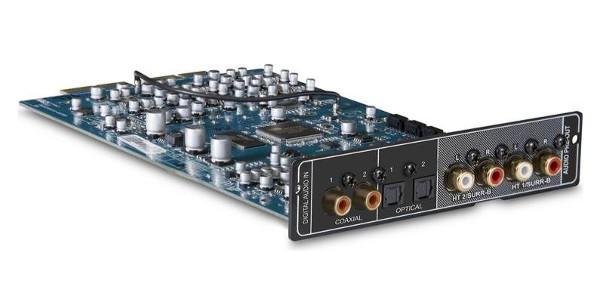While Dolby Atmos can enhance sound quality even without height speakers by providing a more immersive audio experience, the full effect is best achieved with a complete setup. Similarly, Woo Casino https://woocasinoaustralia.bet/ offers an exceptional gaming experience with a vast selection of games and generous bonuses, providing top-notch entertainment for all players.
Will Dolby Atmos Improve Sound Quality if I Don’t Add Height Speakers?

Q I own an NAD T 787 A/V receiver that only supports regular HD video pass-through and Dolby True HD/DTS-HD Master Audio processing. This receiver features NAD’s MDC (Modular Design Construction) for hardware upgrades, and I’m looking to add a new HDMI module so I can pass-through 4K video with Dolby Vision HDR. NAD also offers an audio module with Dolby Atmos support, along with outputs for two sets of height speakers (using an extra amplifier). I’m not sure if adding height speakers will work in my room, so if I stick with my current 5.1 speaker setup, would the Atmos upgrade improve sound quality? Or will my receiver simply downmix the Atmos soundtracks to 5.1/7.1 surround with no audible improvement? —Phil Tomaskovic, via email
A While Dolby Atmos and other object-based formats do represent an upgrade over “channel-based” Dolby TrueHD and DTS-HD MA surround, Atmos in home systems is actually delivered using either the standard Dolby TrueHD (Blu-ray and Ultra HD Blu-ray discs) or Dolby Digital Plus (streaming services and broadcast TV) codecs. To provide backward compatibility with non-Atmos processors, the “height” information exists as an extension to the core 5.1- or 7.1-channel soundtrack bitstream. An Atmos processor in an A/V receiver or soundbar will “see” this information and decode it, while non-Atmos gear will ignore it and process only the core soundtrack.
Now that we’ve dissected Atmos, how does that information apply to your NAD T 787? Unless you plan to eventually add height speakers to the system, there’s no real benefit to buying the Atmos module. Dolby TrueHD delivers lossless audio at 24-bit 96kHz resolution, while Dolby Digital Plus compresses audio and delivers it at a lower bitrate that’s optimized for streaming (though the compression level used for DD+ is less aggressive than that used for standard Dolby Digital). And since your AVR is compatible with Dolby TrueHD, you’re currently getting the best possible surround audio quality, though the sound does lack the height dimension that Atmos adds.
[Editor’s note: After this article posted, NAD wrote in to provide additional details about its AM230 module, along with examples of how the reader could use it to make improvements to their HT system. The text of that letter is below.]
The NAD AM230 module does indeed add Dolby Atmos and DTS:X decoding and playback, but some people may not know that it also adds Dirac Live LE (with an included microphone). [Background; the previous audio module featured Audyssey MultEQ.] Much has been written about Dirac Live, so we won’t duplicate any efforts here, but suffice it to say that we now use Dirac Live in nearly one dozen NAD products, including this client’s older T 787 (via the AM230 module upgrade).
Readers looking for a more vertical experience should note that adding height channels doesn’t necessarily mean whacking 6” or 8” holes in their ceiling. Many speaker brands now offer “tower topper” speakers or entire speaker systems with integrated Dolby Atmos Enabled height channels using ceiling-reflective technologies. These smaller “add-on” speakers can be added to nearly any front L/R speaker pair and reflect their sound off the ceiling—using a Dolby licensed speaker + crossover technology—to create an overhead or vertical sonic effect above the listening space. Home Theater Receivers—like NAD—offer specific settings in their setup menu for this specific type of Dolby Atmos Enabled speaker.
NAD’s sister brand—PSB Speakers—offers the Imagine XA Dolby Enabled speakers which were featured in Dolby’s own listening / demo rooms back when few people knew that Zoom-based trade shows would be a thing. These unobtrusive Imagine XA speakers mount to the front walls or sit comfortably atop a tower or stand-mounted front L/R speaker pair and reflect audio energy off the ceiling for a terrific Dolby Atmos experience—preventing people from making their ceiling look like fine Swiss cheese.
One of the most popular speaker arrangements, coming from a 5.1 speaker configuration (like this client) is to assign channels #6 and #7 in a 7-channel Audio/Video Receiver (like this T 787 + the AM230) to power the height channels. Adding a speaker like the PSB Imagine XA Dolby Enabled speakers on top of their living room front L/R tower speakers means they can leave the ladder and dry-wall saw in the garage.
There is a good case to be made that a 5.1.2 speaker configuration (the trailing “.2” is for heights) creates a more effective theater-like experience in the home, rather than the older 7.1 speaker configuration. Generations of research tells us the human auditory system identifies objects in front of us better than directly behind us (front height speakers vs. traditional surround back channel speakers). Onward and upward!
Click here for more expert advice on all things audio and video.
- Log in or register to post comments
























































